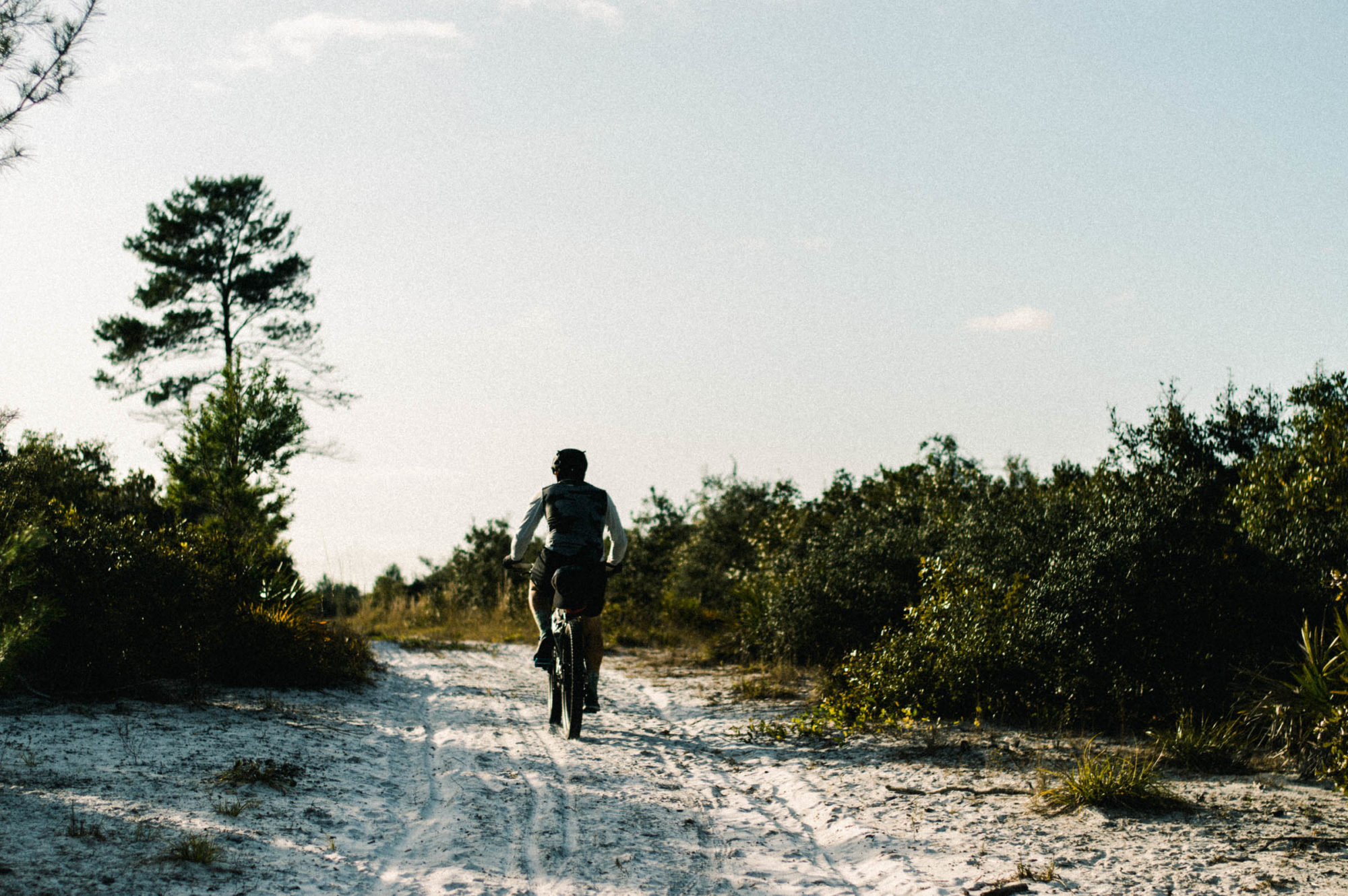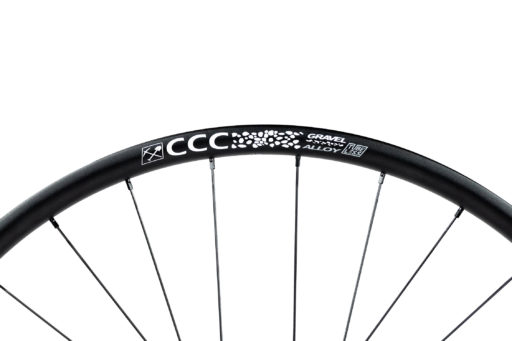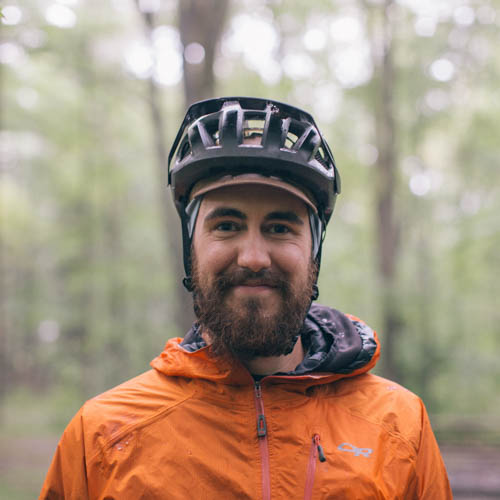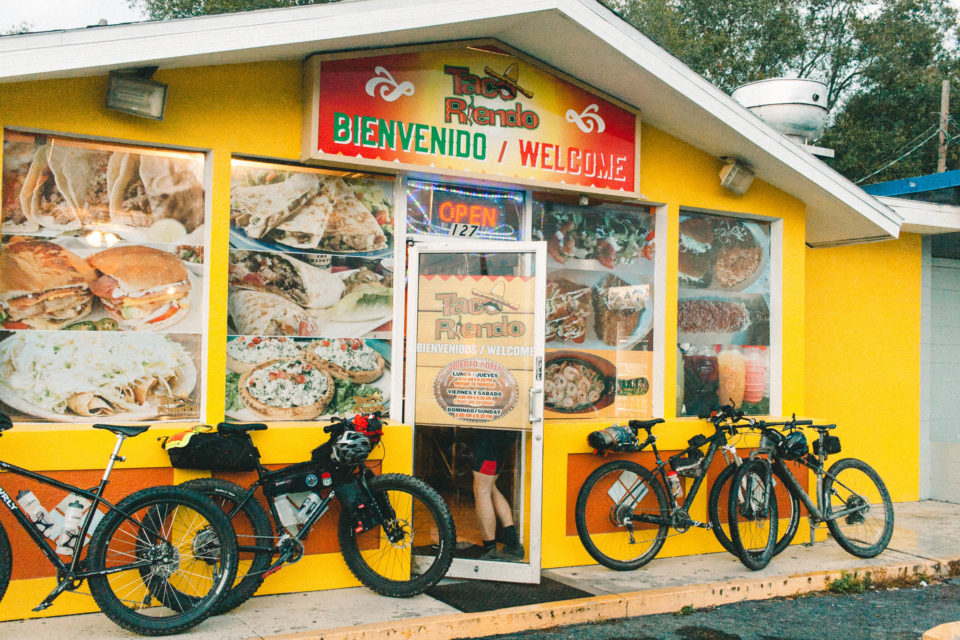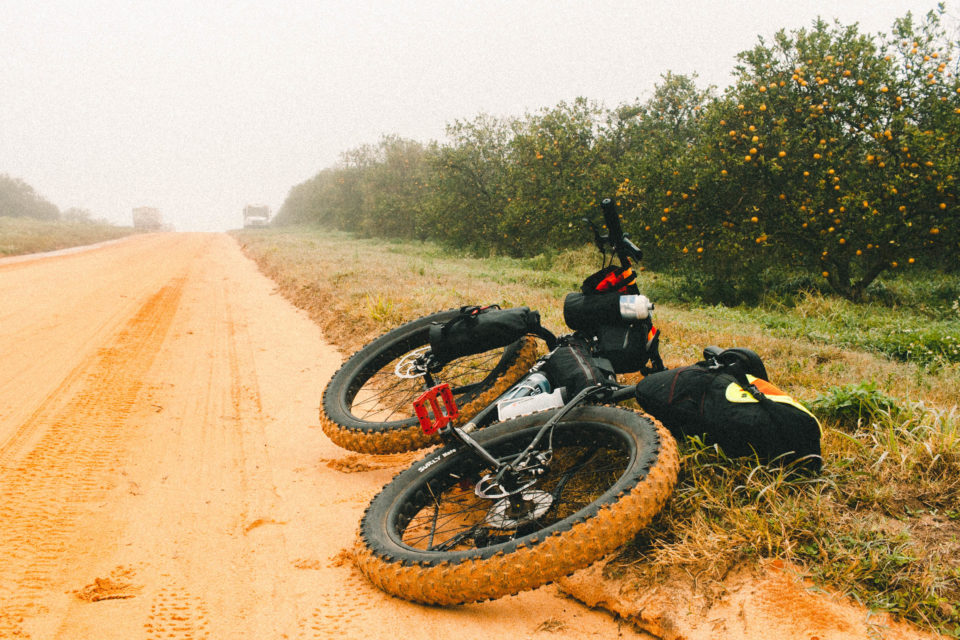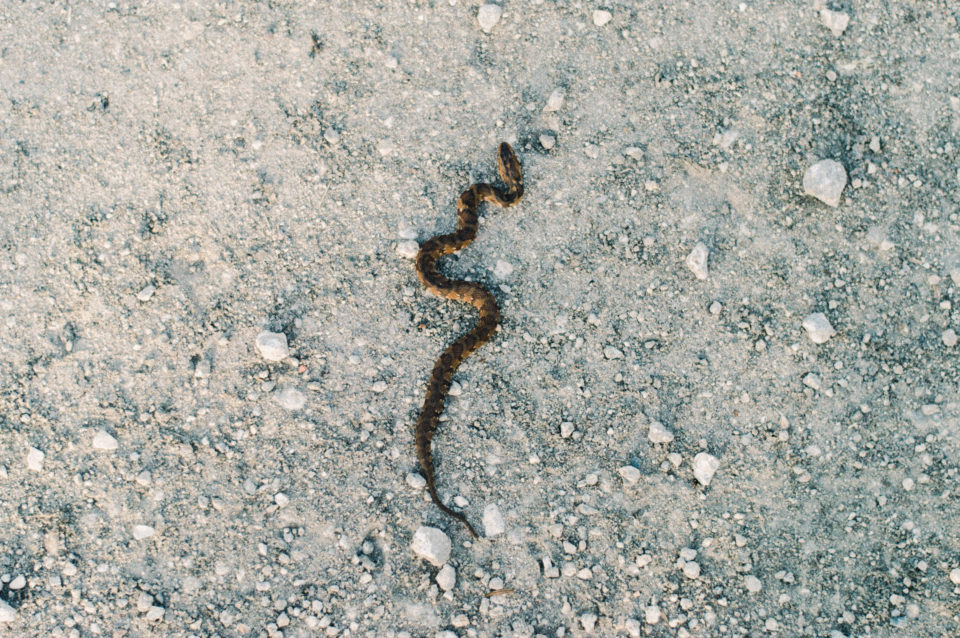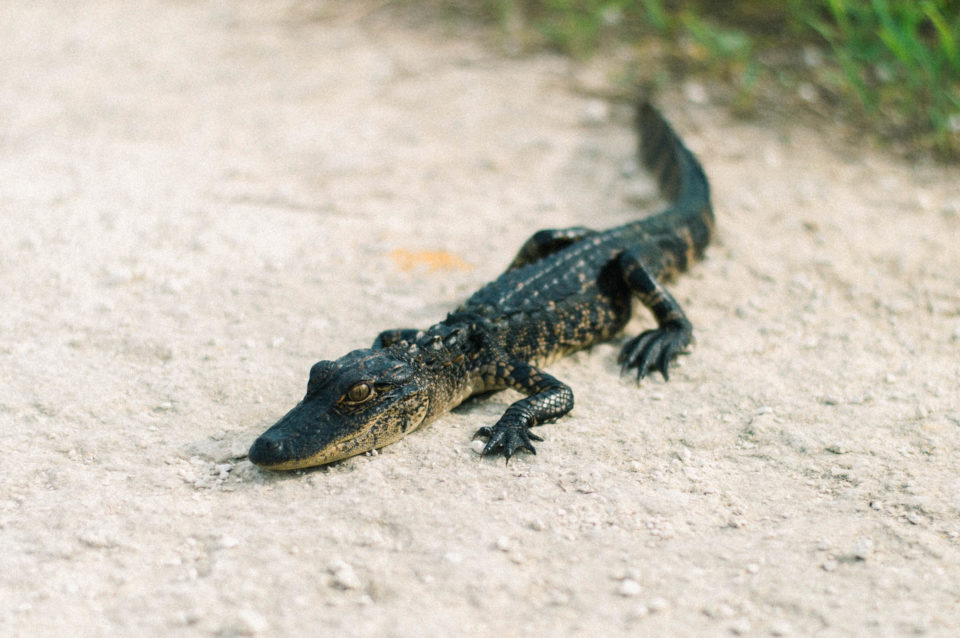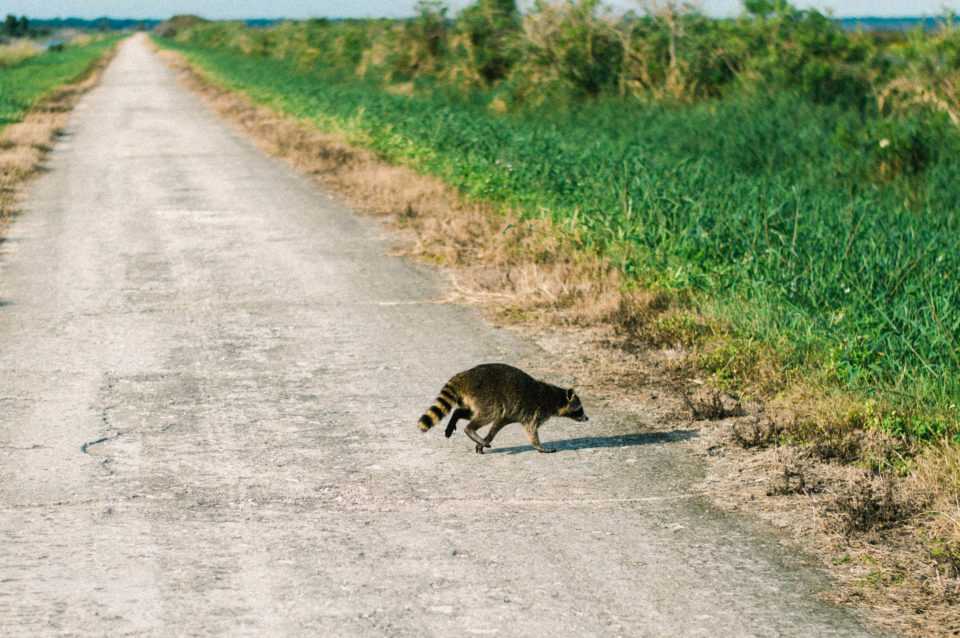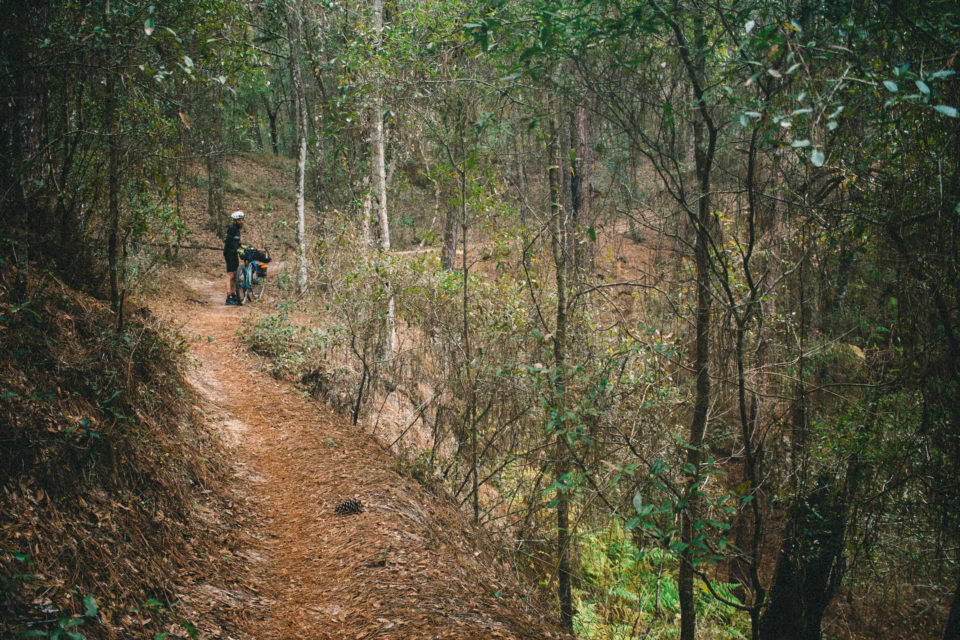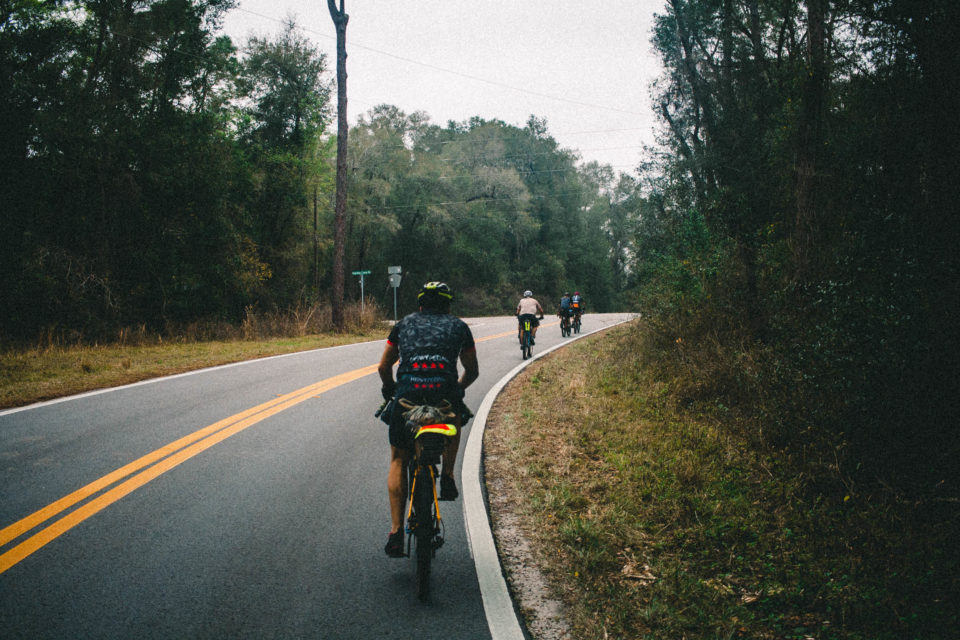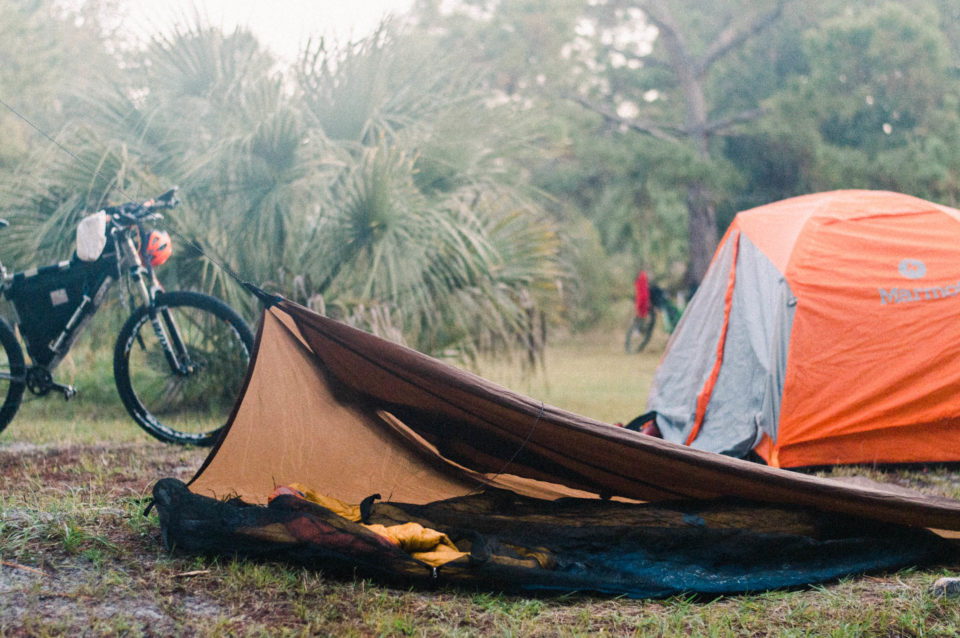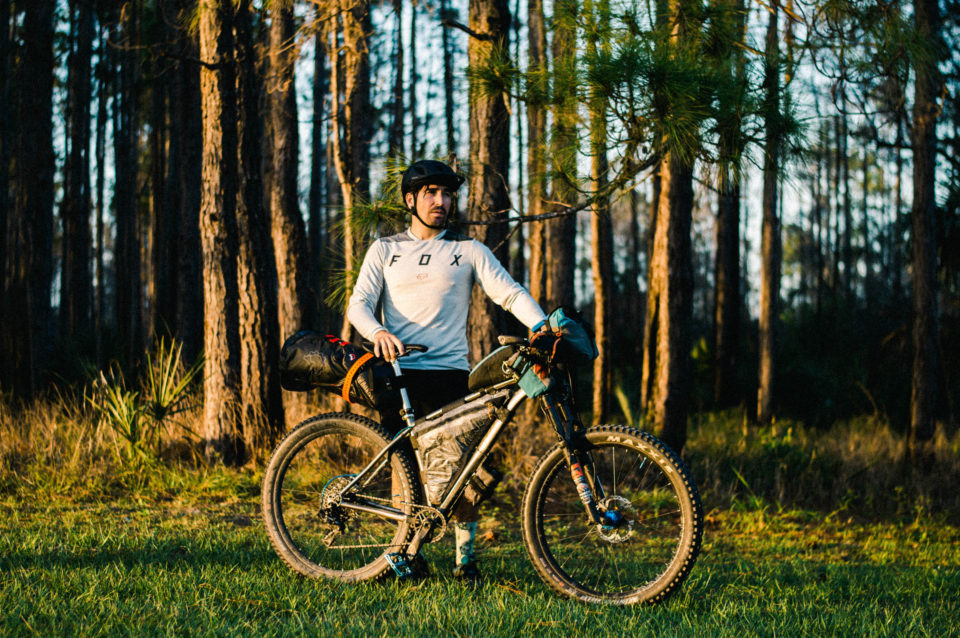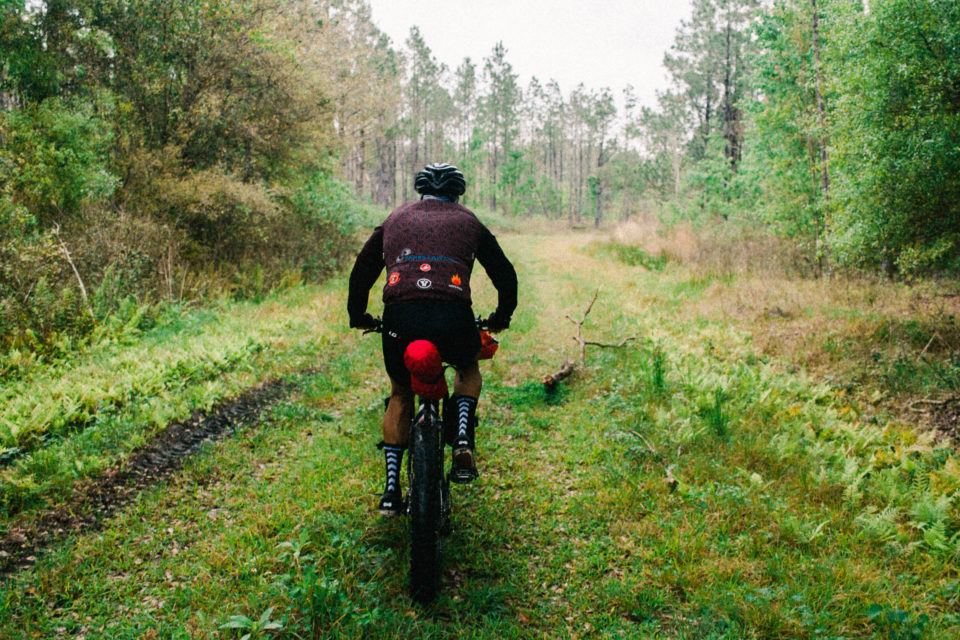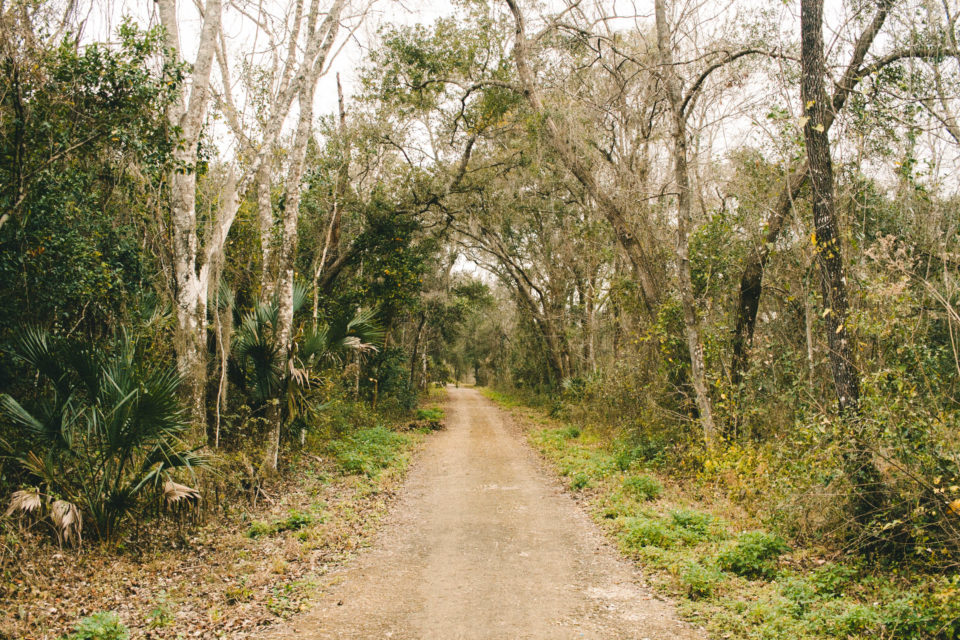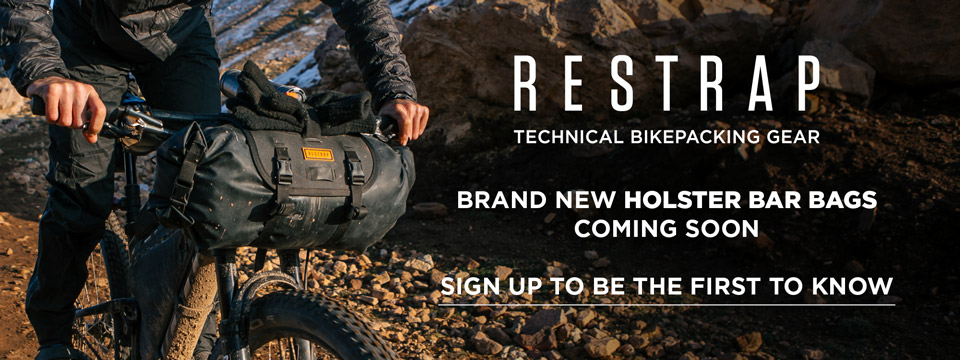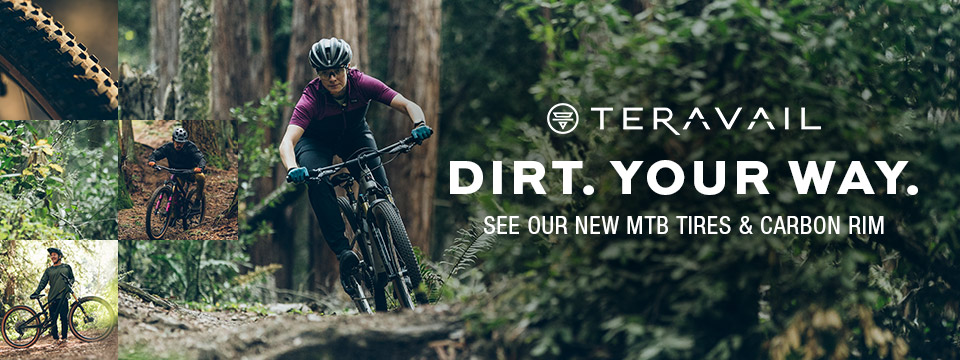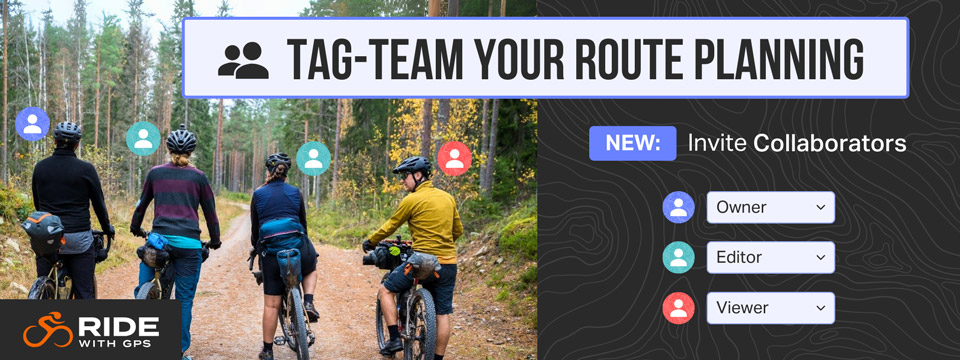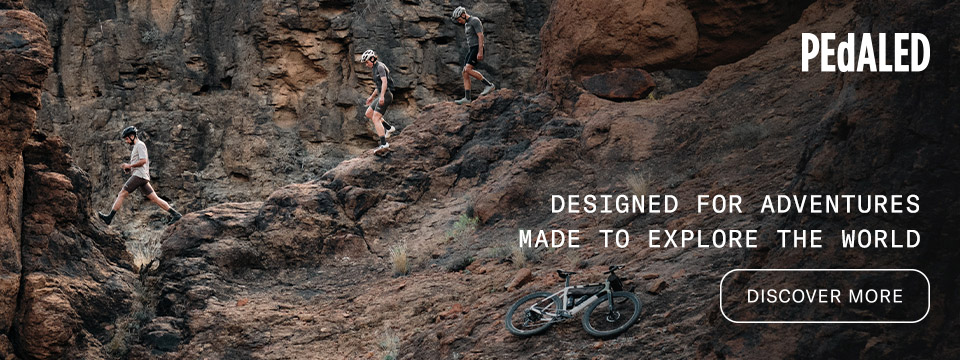The Huracan 300 is Florida’s most epic self-supported bikepacking race, with some of the state’s longest and hardest climbs, attracting over 100 riders at this year’s grand depart. We reached out to Jen Colestock for a reflection on her experience, accompanied by an amazing set of photos from David Childers…
Words by Jen Colestock (@Jen_coleslaw), photos by David Childers (@dchildersphoto)
If you’re wondering what a Florida bikepacking route will be like: there will be a bunch of straightforward sections, just enough to lull you into a sense of safety. Right when you get into the rhythm of it and start knocking out miles, you’ll hit a long stretch of deep sand, or a river crossing with a sign warning of alligators. Fortunately, Karlos spared us the five-mile, knee-deep swamp walk from last year. It was the first long ride I’d done in my current pair of shoes, and they’re still recovering.
Contrary to popular belief, Florida isn’t just beaches, Disney, and retirement communities. There are massive tracts of wild land, springs, swamps, rivers, forests, and scrublands back there if you look closely, and Karlos’ routes do an amazing job of dropping you into the middle of it.
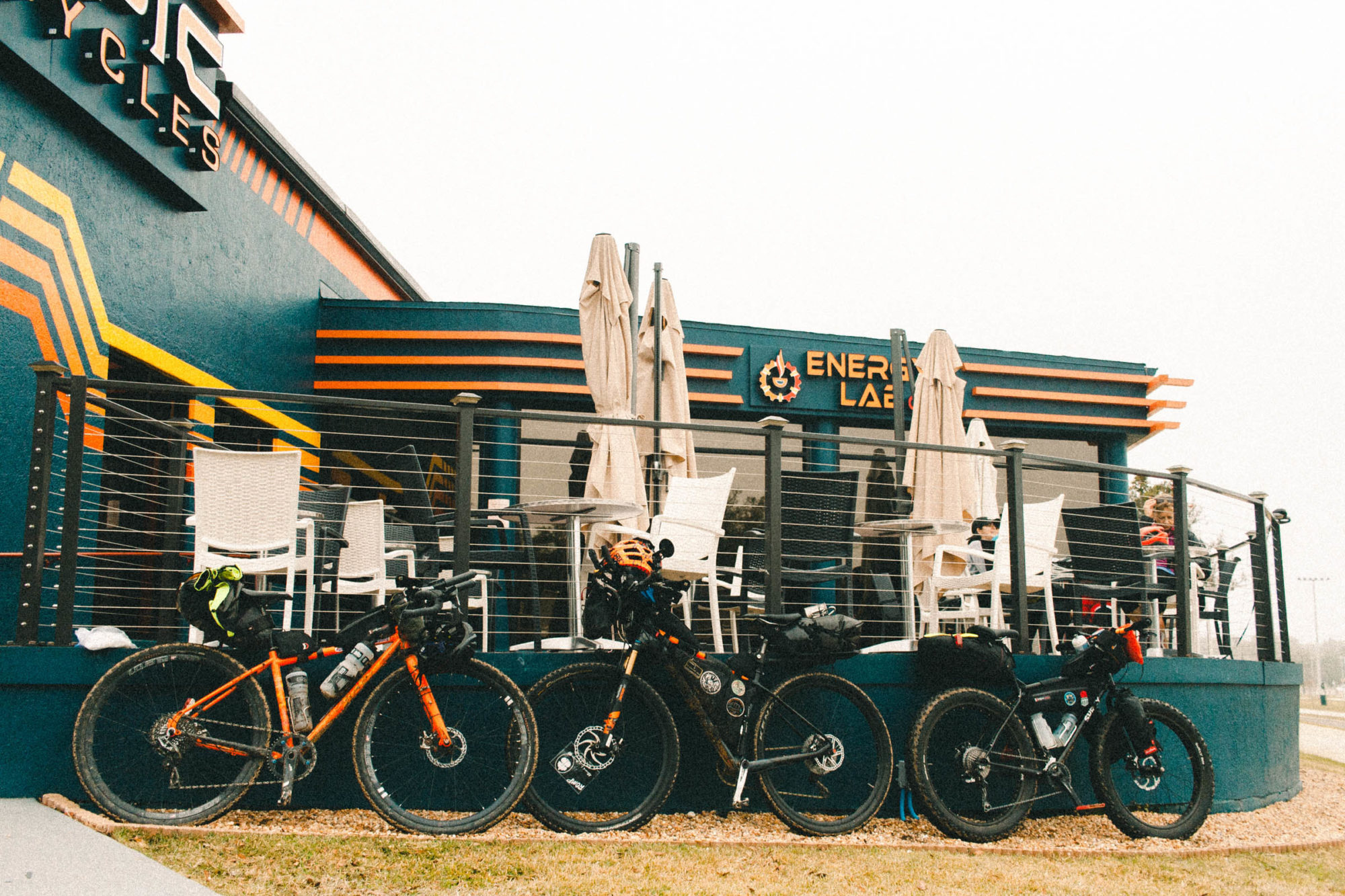
We’d ridden for 30 minutes down an arrow-straight section of paved greenway when the route took a sharp turn at an underpass. I dismounted and scrambled up a set of stairs cast into the steep bank under the bridge.
After mile 100, a small band of us formed into a “chase group” to tag together through the Green Swamp. This 70-mile stretch has no resupply points and is the most remote section of the course, so a loose knot of five was welcome company riding into the evening. As the hours passed, I noticed that three of five of us were women. This sounds like a small point, but it means a lot to anyone who’s ever experienced the feeling of being the “token woman” of a ride.
Ultra racing is managing your own race, but hell, it is nice to see the presence of woman normalized in these events, in all parts of the field: from those riding through the night to win a top spot, to those whose definition of party pace takes them a few days longer.
We hit one of the notorious water crossings, Meg’s Hole, as the sun was setting. As you approach, the road seems to dip straight down into black water. We trudged around some cypress knees to the left, balanced our bikes on our shoulders, and sidestepped along a fallen log. Later, a friend and Huracan veteran told me of powering through his “known” route around the hole, misstepping, and immediately submerging up to his chest. Afterwards, he remembered that his cold-weather clothing for the night was stuffed into his jersey pockets.
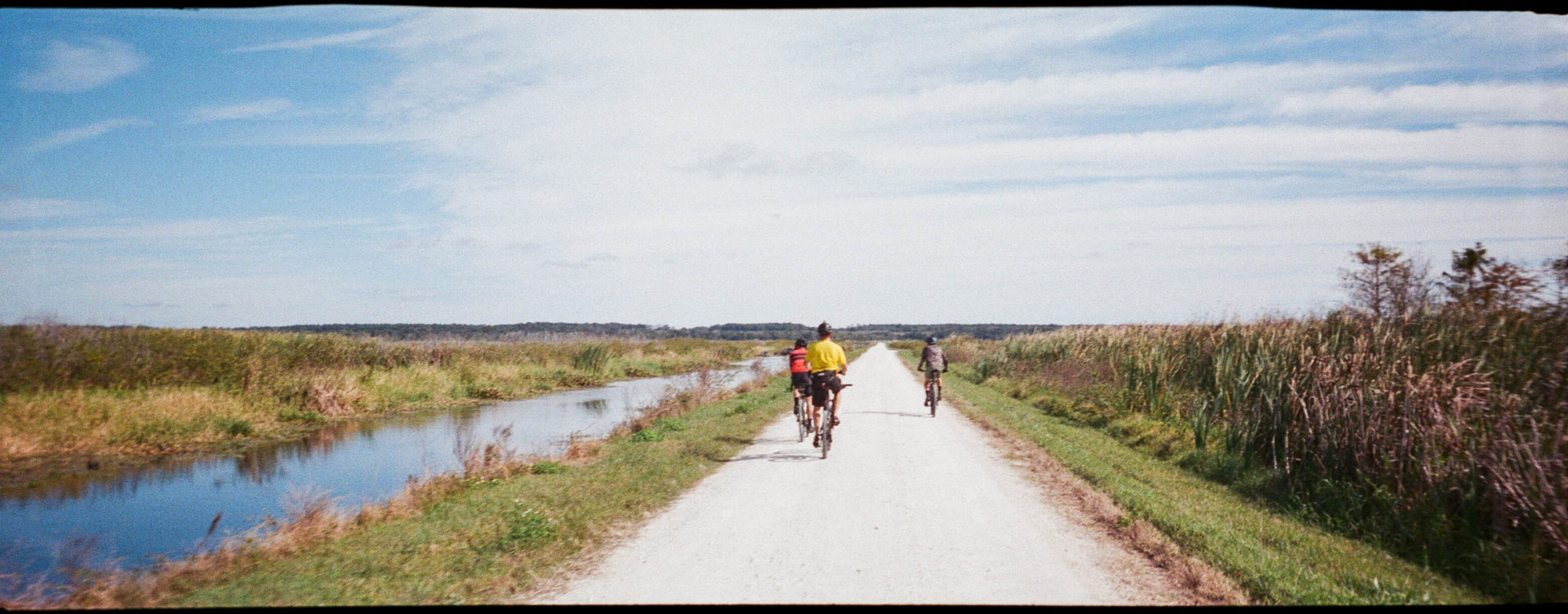
Between Clermont and Ocala are the Florida Pyrenees, a section going through the Florida “Divide” with repeated 15% grades just after the 170-mile mark. I hit these around 5:00 a.m. and knocked them out before I was fully awake, which was nice.
The main challenge of such a flat route may not be obvious: if there is no major elevation gain, neither are there any extended descents. You’re pedaling 95% of the time that you’re riding. This is where multiple hand and riding positions are key.
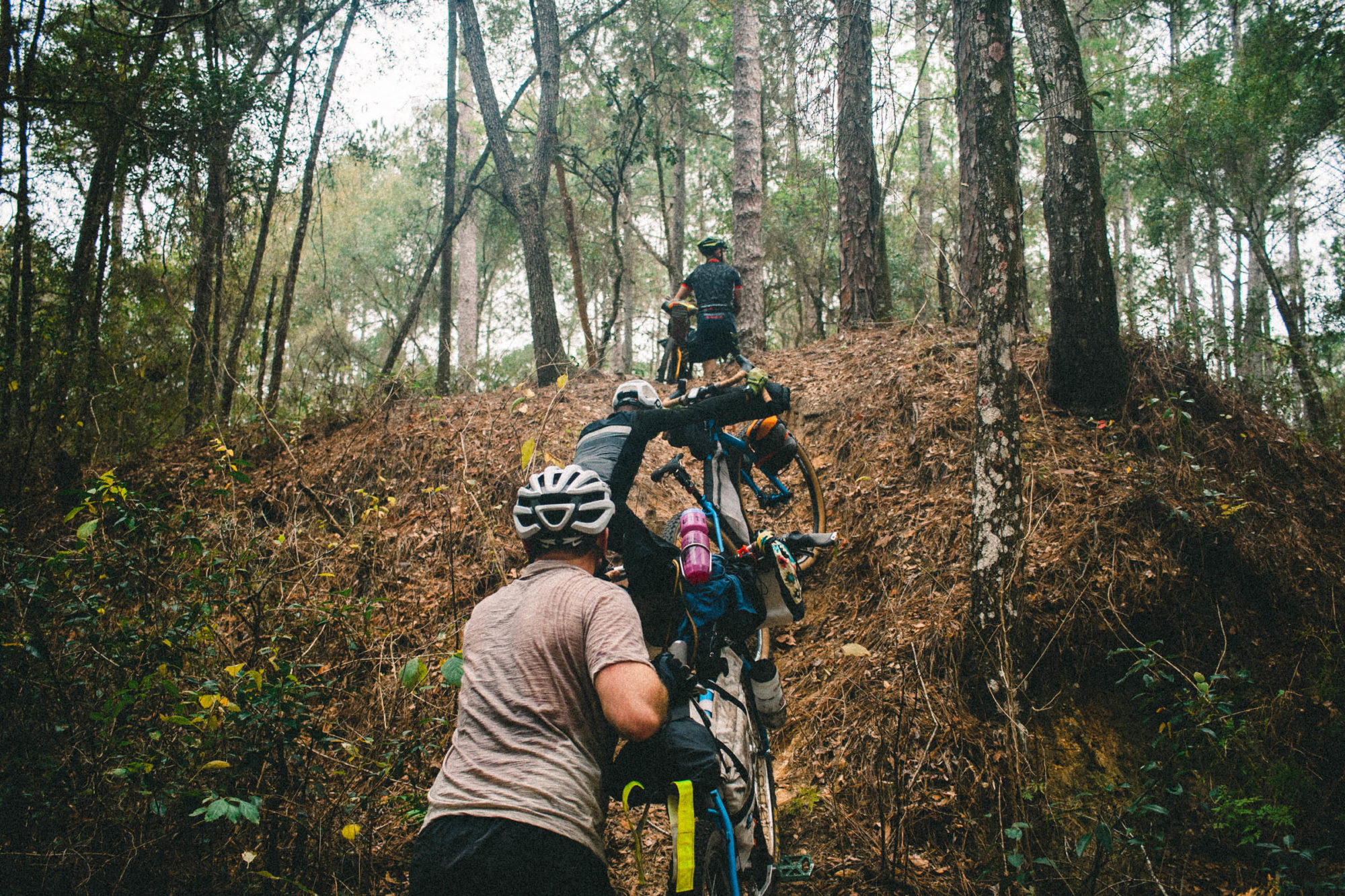
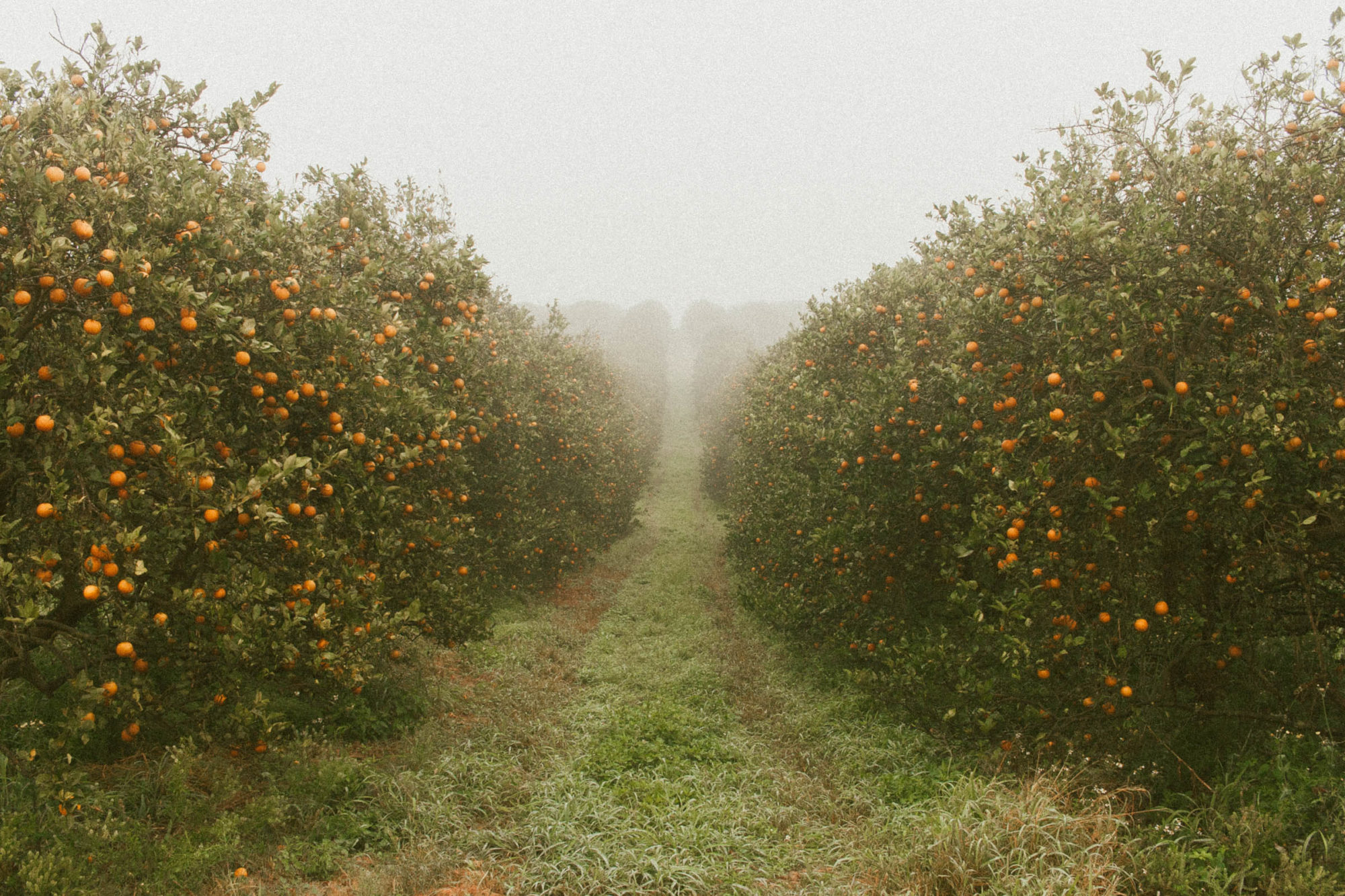
Several sections look like someone dropped a handful of spaghetti or breadcrumbs (depending on your brand) onto the screen of your head unit. Other times, base maps and the route itself disagree by a few hundred feet, leading you glancing into the swamps on either side, looking for these ghostly parallels.
The last 20 miles of the race are singletrack, for a total of 90 singletrack miles. Florida singletrack makes up for the lack of elevation in how twisty it can be. It’s packed tight like a block of uncooked Ramen noodles, twisting and doubling back and forth on itself. These 20 miles follow the ruins of the Florida Barge Canal, an abandoned effort to join the Atlantic to the Gulf. The trails flow back and forth across the old canal diggings, with plenty of whoop-de’s, water bars, roots, and punchy climbs that would be an engaging ride in itself.
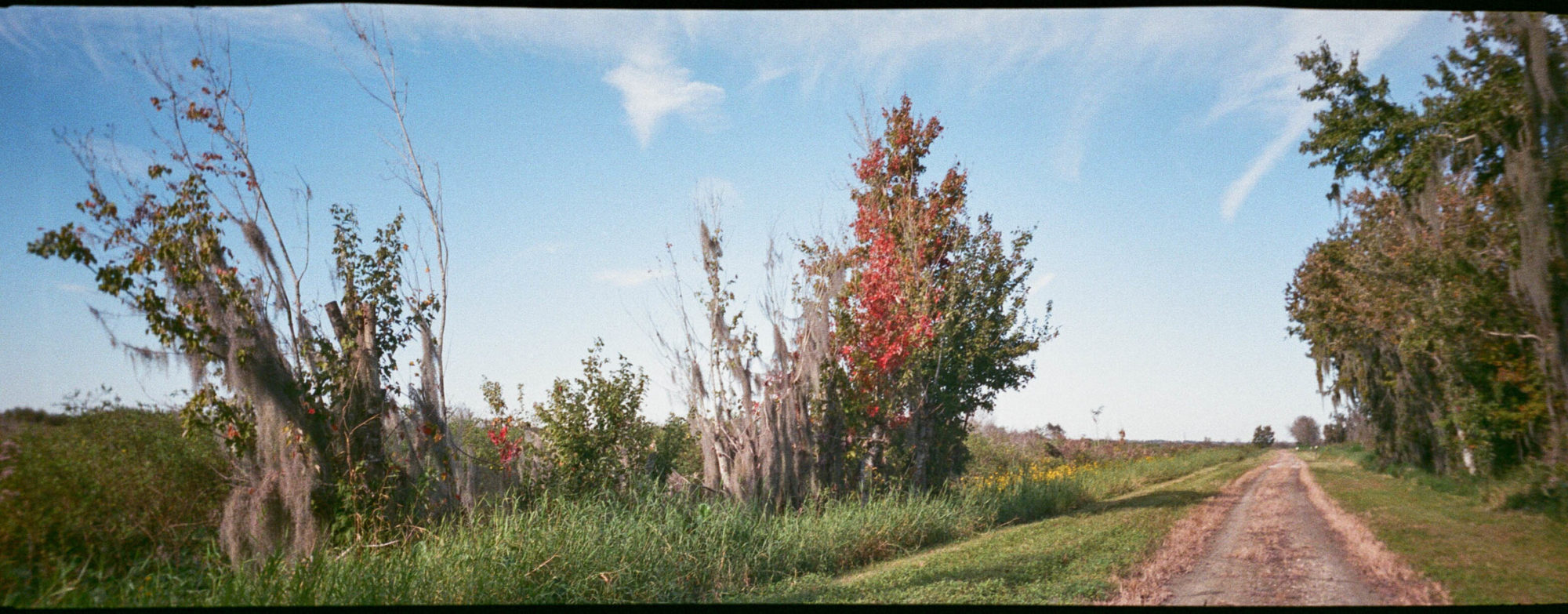
Resupplies are ample along the course, but are largely remote Florida gas stations. I at least knew that I’d be able to find a Chocolate Chip or a Peanut Butter Crunch Clif bar at any given point. At the Paisley checkpoint, a gathering of three buildings in the middle of a remote section, there was a pizza place, the Paisley Mart (a near-empty convenience store), and a Dollar General.
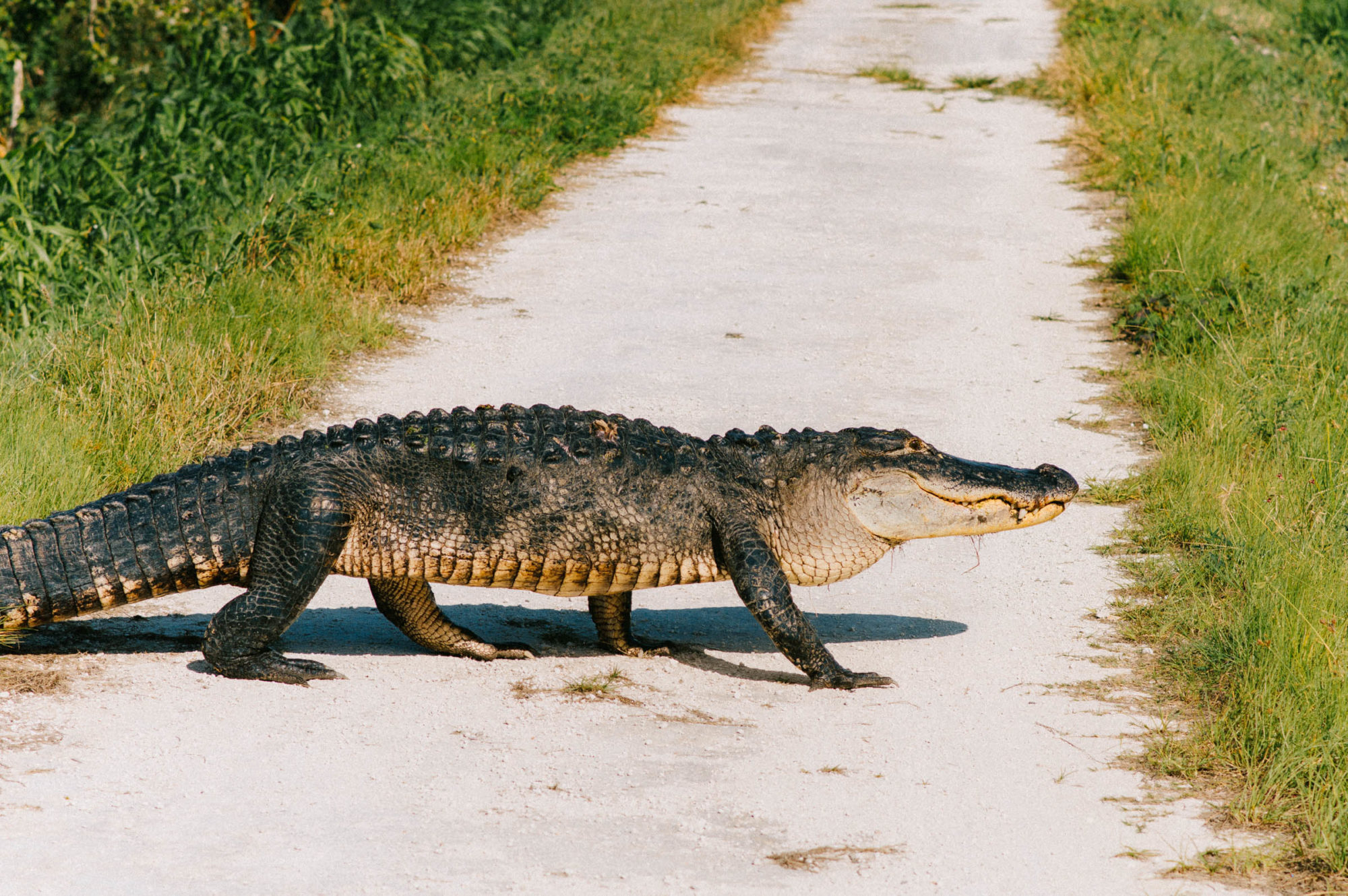
Wildlife is ample along the Huracan course. February is the perfect time for this course as you’ll get enough Florida sun to chase away your Seasonal Affectedness Disorder, but the water is still too cold for the gators to care as you wade across. Lake Apopka has gators, bobcats, otters, and a whole chorus of birds. However, I seemed to miss most of the animal sightings this year. Gabriel, a Canadian rider, passed me at a pit stop and said he saw a black bear a hundred feet down the road, and described seeing what must have been a Florida panther the night before. The second night, while I wound through the singletrack at Santos, I wished there was a rider whose wheel I could chase to keep focused as the night wore on. Turning the next corner, a raccoon sprinted down the trail ahead of me. I chased him (slowly!) for a few hundred yards until he realized he could simply turn off the trail.
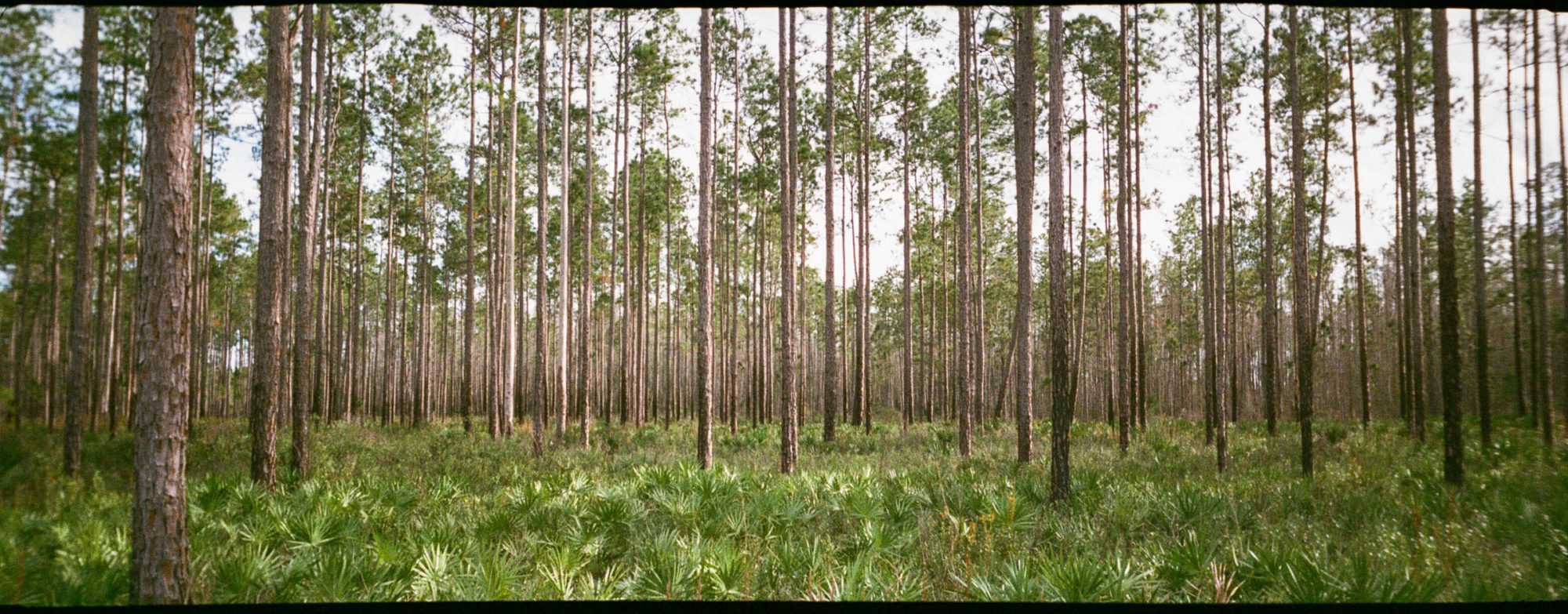
If you’d like a description of what the Huracan course feels like, it could be summarized in a few different impressions:
- True Detective, but the first season. Big skies, rolling sparse pine forests, palmetto scrub, and black swamp water.
- Skirting the very edge of Disney territory. Meaning gas station food and hotel prices are higher than usual.
- Is this a trail? This can’t be the trail. Is this really where we’re supposed to be going right now? Oh right, there’s the white blaze.
- Worn limestone roads glowing in the dark. You can see an orange hint of light pollution from miles away, but you haven’t seen a building for over an hour.
Congrats to everyone who participated in this year’s event. John Schwab took first place with a time of 30 hours, 40 minutes; Jason Vance took second in 30 hours, 53 minutes; and Joe Wharton followed closely behind at 32 hours, 8 minutes. Jen Colestock, who provided this reflection, finished in 39 hours, 43 minutes.
Want to learn more about the route? Make sure to check out our official Huracan 300 bikepacking route page for all the details. And keep an eye on our events calendar for details on next year’s event.
Please keep the conversation civil, constructive, and inclusive, or your comment will be removed.







